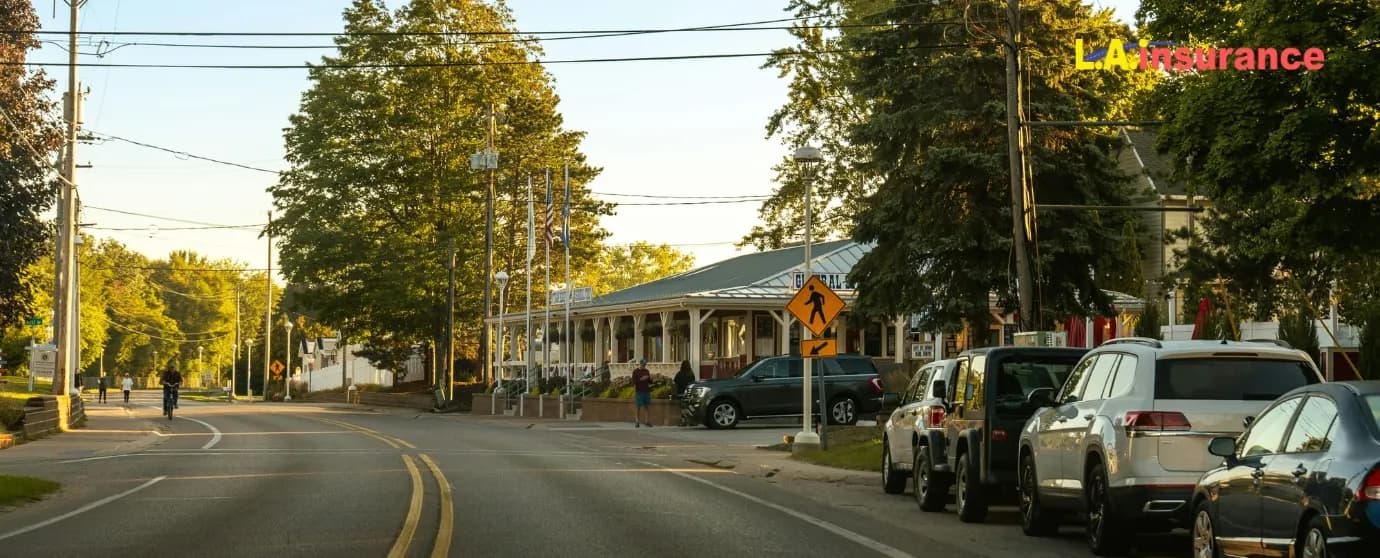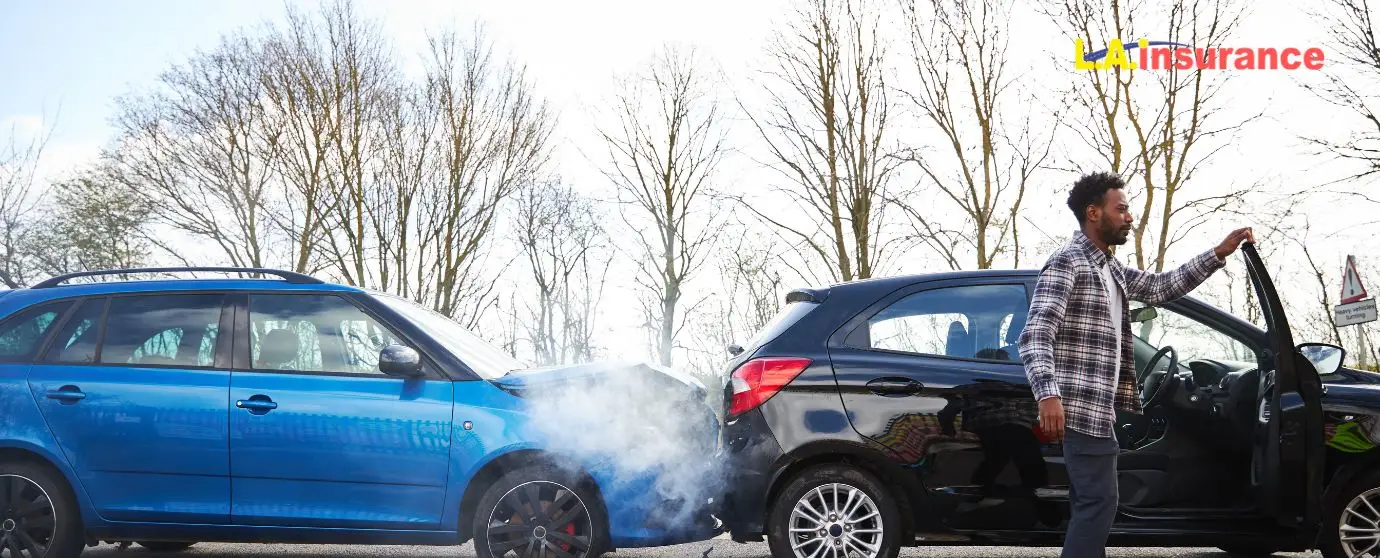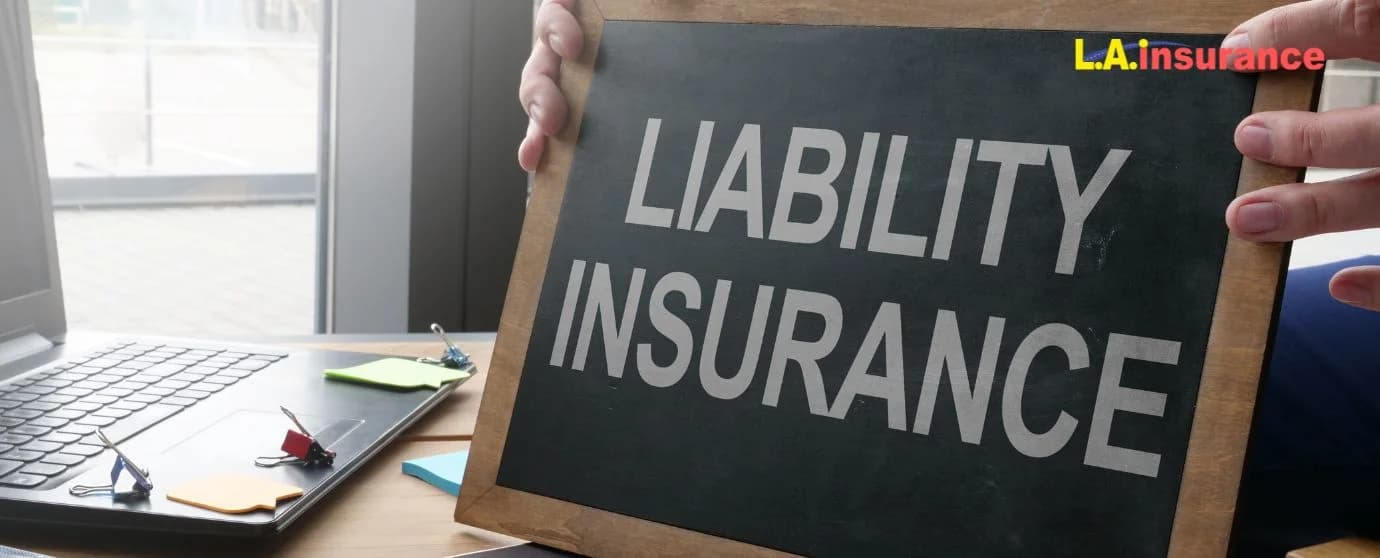
Publish Date: 05-04-2025
Auto Insurance
Last Updated: 15-04-2025
17 Ways to Lower Your Car Insurance Rate
Car insurance can be expensive, particularly if live in a no-fault state like Michigan or Florida. So, when it comes to this question of how to lower car insurance costs, the first thing to remember is that every dime counts. Overpaying for auto insurance is utterly frustrating when you’re already juggling car payments, gas, and auto repairs.
So, if we cut to the chase, costly car insurance rates are probably taking the lion's share of your budget. But you can avoid paying extra. There are smart ways to cut your auto insurance costs without compromising on adequate coverage.
Even if you can make some small changes like improving your credit score or taking a defensive driving course, it can help reduce car insurance expenses. Also, shopping for better and cheaper insurance quotes can lead to affordable car insurance premiums.
Many drivers in the United States choose a higher deductible or bundle home insurance with an auto insurance policy to get a lower car insurance rate. Safe driving habits and avoiding moving violations can keep rates low too.
Here are 17 easy and effective ways to lower your car insurance costs:
- Shop Around and Compare Car Insurance Quotes
- Increase Your Deductible
- Take Advantage of Car Insurance Discounts
- Maintain a Clean Driving Record
- Improve Your Credit Score
- Consider Dropping Collision and Comprehensive Coverage
- Bundle Your Insurance Policies
- Choose a Car That’s Cheaper to Insure
- Enroll in a Usage-Based Insurance
- Take a Defensive Driving Course
- Avoid Small Claims to Keep a Good Record
- Pay Your Annual Premium Upfront
- Choose the Right Liability Coverage Limit
- Keep Your Car Secure and Park in a Safe Location
- Consider Switching Car Insurance Companies
- Remove Unnecessary Coverage Add-Ons
- Ask About Special Discounts and Group Insurance Plans
1. Shop Around and Compare Car Insurance Quotes
All the car insurance companies are different, and so are their rates. That’s why shopping around and getting multiple quotes can save you hundreds of dollars.
In fact, according to a ValuePenguin study, American drivers could save $1,300 annually by comparing car insurance quotes. Despite these savings, many drivers stick with their current insurance company out of habit.
However, it is also worth noting that how much is car insurance may depend on factors like your driving record, ZIP code, and even the vehicle you drive. Insurance companies also adjust rates based on their claim history, which means a cheaper insurance policy might be available elsewhere.
To get the best deal, compare at least three car insurance quotes. Check national insurance provider. But don’t ignore smaller auto insurance companies. Some regional insurers offer discounts or cheaper rates that bigger names don’t. Also, you can use an insurance comparison site like compare.com, The Zebra, or Insurify to make the process easier.
If you prefer personal guidance, an auto insurance agent can help you find cheap car insurance options. You can also get a free car insurance quote from L.A. Insurance and compare it to other carriers.
Nevertheless, always review the insurance coverage details. Keep in mind that a lower rate means nothing if your auto policy doesn’t protect you when you need it the most.
2. Increase Your Deductible
Raising your deductible is another simple way to lower your car insurance premium. A higher deductible means you’ll pay more out of pocket for a claim. However, it also reduces your insurance costs because insurers charge less when they expect fewer claims.
According to a 2008 study published in the Journal of Risk and Insurance, increasing deductibles makes people less likely to file small claims. As a result of this auto insurance rates decreases. Because auto insurance companies face less financial risk.
Another 2007 study published in the same journal also found that policyholders with higher deductibles filed fewer claims which supported the idea that this strategy helps cut car insurance costs.
A 2003 study in the Geneva Papers on Risk and Insurance Theory supports this further. It found that requiring higher deductibles encouraged safer driving and reduced unnecessary claims. As a result, insurers could offer lower car insurance premiums.
ValuePenguin research shows that increasing the deductible from $50 to $250 for comprehensive and collision insurance coverage can save around $222 or 29% per year on physical damage premiums.
However, despite the savings, you can consider your savings account before increasing your deductible. If you can’t afford a high out-of-pocket payment after an accident, this strategy may not be ideal for you. But if you drive safely and rarely file claims, go for a higher deductible. It will certainly help you secure cheap car insurance.
3. Take Advantage of Car Insurance Discounts
Many insurance providers offer discounts that can considerably reduce your car insurance costs. Unfortunately, not all drivers are aware of it enough to take advantage of these savings.
In fact, a 2016 study published in The Geneva Risk and Insurance Review found that policyholders with lower claim probabilities and higher wealth tend to receive bigger car insurance discounts. It also revealed that if you’re a driver with an expensive vehicle and a good claim history, you’ll qualify for greater discounts and insurance savings.
Let’s look at the various car insurance discounts that can help you save big:
- Safe Driving Discounts (e.g., Participating in a defensive driving course)
- Multi-Policy and Multi-Vehicle Discounts (e.g., Auto and home insurance)
- Usage-Based and Low-Mileage Discounts (e.g., UBI/ Telematics)
- Student and Military Discounts (e.g., good students, military personnel, veterans, and seniors)
- Vehicle Safety and Anti-Theft Discounts (e.g., airbags, anti-lock brakes)
Keep in mind that some insurance policies automatically apply discounts, and some may not and require you to request them. That’s why you need to ask your insurer whether you qualify for any of these discounts and save some extra on your auto insurance premiums. Plus, you can review your car insurance policy annually to check if new auto insurance discounts are available.
4. Maintain a Clean Driving Record
Your driving record or driving history plays an important role in determining your car insurance rates. A history free of moving violations and accidents shows insurance companies that you’re a responsible driver. In return, they reward you with lower car insurance premiums.
According to The Zebra’s 2022 Auto Insurance Report, drivers with a clean record can save up to 36.7% on car insurance compared to those with an at-fault accident and save 61.9% compared to drivers with DUI convictions.
Speeding tickets also matter in car insurance costs. Drivers with speeding violations are, on average 29.5% or higher than those with a clean record.
Another article on ValuePenguin says a good driver can save anywhere between 10% to 30% on car insurance premiums.
These percentages can vary drastically based on other factors including the state you live in and individual driving profile and claim history.
You can learn more about how driving history affects car insurance rates.
How a Clean Driving Record Lowers Car Insurance Costs
- Qualifies You for Safe Driving Discounts: Many auto insurance companies offer discounts to drivers with no accidents or violations for a certain number of years.
- Prevent Rate Increases Due to Claims: Filing frequent car insurance claims can cause your car insurance premiums to go up. If you avoid filing unnecessary car insurance claims, it can keep your auto policy affordable.
- Opens the Door for Better Insurance Offer: Drivers with a flawless driving record have access to cheap car insurance. When shopping for car insurance quotes, a clean record makes you eligible for lower insurance rates from insurance companies.
A Few Tips to Keep a Clean Driving Record
- Follow the speed limit and obey traffic laws.
- Avoid distracted driving, such as texting behind the wheel.
- Take a defensive driving course to enhance your skills.
- Drive carefully to prevent accidents and keep your insurance policy affordable.
5. Improve Your Credit Score
Another effective way to lower auto insurance premiums is to improve your credit score. Although using credit-based insurance scores has been banned in a few states including Michigan, Massachusetts, Maryland, California, Hawaii, Nevada, Oregon, and Utah, the majority of states still allow to use it.
Insurance companies use credit data to predict the likelihood of a policyholder filing claims. That’s why a poor credit score can raise your auto insurance rate considerably even if you have a good driving record. A lower credit score signals a higher chance of filing claims and faces higher car insurance premiums. This is because drivers with poor credits are seen as high-risk.
According to a 2023 Consumer Federation of America Report, American drivers with fair credit and clean driving records pay $231 more per year for state-mandated auto insurance compared to drivers with clean driving records and excellent credit. Poor credit holders pay even higher, around 115% extra compared to drivers with excellent credit.
This shows how crucial it is to improve your credit score to get cheaper auto insurance quotes, particularly if you’re living in a state that allows a credit-based insurance scoring system.
You can learn more about how credit scores affect car insurance costs.
Ways to Improve Your Credit Score and Lower Car Insurance Premiums
- Pay your bills on time, including credit cards, loans, and utilities.
- Reduce credit card balances to improve your credit utilization ratio.
- Check your credit report regularly and dispute any errors.
- Avoid opening too many new credit accounts.
6. Consider Dropping Collision and Comprehensive Coverage
Not every driver needs the same type of car insurance coverage. If you own an older vehicle with a low market value, you can save money by reducing coverage.
Legally, you cannot drop liability coverage, which typically includes property damage liability, bodily injury liability, and personal injury protection (no-fault state). Apart from this state-mandated coverage, you can drop collision and comprehensive car insurance. These coverages pay for repairs or replacement if your car is damaged in an accident, stolen, or affected by events like flood, fire, storm, or vandalism.
If you’re living in a city where the rate of crime is too low, or there’s a very low chance of weather-related property damage risks, you can easily drop comprehensive coverage which generally protects you from theft, vandalism, natural disaster, and animal collisions.
Also, if your car isn’t worth much, the cost of carrying these coverages might not be worth it. However, only if the car is financed, or leased, you cannot drop any of this coverage as lenders require you to carry full coverage auto insurance.
When Does Dropping Coverage Make Sense?
- If your car’s value is low: If the costs of collision and comprehensive coverage exceed 10 times your vehicle’s value, it may not be worth keeping, says the Insurance Information Institute (III). You can check sources like Kelly Blue Book or Edmunds to find out your car’s current worth.
- You can afford repair or replacement: Without collision coverage, you’ll need to pay for damages caused by accidents or collisions with stationary or moving objects. Without comprehensive coverage, damages from theft or weather events won’t be covered. If you have enough savings, dropping both collision and comprehensive insurance could lower your auto insurance costs.
- Rare chance of accidents, theft, or weather risks: If you live in a place where there’s a very rare chance of any weather hazards, or property crime like theft or robbery, or if you think the accident or collision-related event ratio is almost negligible for you, then you can consider dropping both collision and comprehensive coverage.
- Your car is fully paid off: If you have a loan or lease, your lender may require collision and comprehensive insurance. But if you own your car outright, you have the flexibility to remove them from your car insurance policy.
Please note that removing both coverages could lower your car insurance premium by hundreds of dollars each year which is certainly tempting but before you make this decision compare deductible, insurance rates, and vehicle value. If the numbers make sense to your rational mind, then dropping collision and comprehensive coverage can be an effective way to achieve cheaper car insurance.
7. Bundle Your Insurance Policies
Bundling home insurance and auto insurance with the same insurance company can result in significant savings for you. Many insurance companies offer discounts if you combine multiple insurance policies under one provider. With this strategy, you can not only reduce auto insurance costs but also simplify policy management.
How Bundling Lower Insurance Costs
- Multi-Policy Discounts: Most insurers offer discounts when you bundle car insurance with other coverages like home insurance, renters’ insurance, or life insurance. According to Forbes, bundling home and auto insurance can get you one of the biggest discounts ranging from 5% to 25%. Besides, if your home and cars are damaged by one single event, you don’t need to pay a deductible for both claims and this can ultimately cut your expenses.
- Loyalty Benefits: Staying with the same insurance provider for multiple policies can open additional perks for you such as accident forgiveness or deductible reductions. Some insurers even provide better customer service and faster claim processing for bundled customers.
Here's when bundling makes sense:
- You need multiple types of insurance coverage as well as want to save money.
- Your current auto insurance company offers competitive rates for home insurance and other policies.
- You prefer managing one insurance instead of handling multiple accounts.
Before bundling, make sure to compare car insurance quotes and check whether bundling truly lowers your costs.
You can bundle insurance policies at L.A. Insurance as well. As the most affordable insurance agency, we offer all types of insurance policies including auto, motorcycle, renters, RV, and boat insurance for you at a price you never thought possible. Call our rep at (888) 500-6065 to discuss what you need.
8. Choose a Car That’s Cheaper to Insure
The make and model of your vehicle have a direct impact on your car insurance rate. Some cars cost more to repair or are at higher risk of theft which ultimately leads to higher insurance costs. That’s why if you choose a cheaper car to insure, it can automatically reduce the total premium.
In contrast, luxury cars, classic cars, and sports cars tend to have higher car insurance rates. Because they need expensive repairs, attract more theft, and trigger more high-speed driving. All of these are considered financial risk factors for any insurer.
Statistically speaking, some vehicles are really safer. They cost less to repair and have lower theft rates. According to industry data, these models typically have lower insurance premiums:
- Subaru Forester
- Honda Pilot
- Subaru Outback
- Honda CR-V
- Jeep Wrangler
- Toyota RAV4
- Ford Escape
Here you can broaden your knowledge regarding how a car’s make and model affect insurance rates.
How to Choose a Car That Lowers Insurance Costs
- Compare car insurance quotes before purchasing a vehicle.
- Check safety ratings from the Insurance Institute for Highway Safety (IIHS).
- Research theft rate and average repair costs for different car models.
- Avoid high-performance cars if you want more affordable car insurance.
9. Enroll in a Usage-Based Insurance
Another great way to cut the cost of your auto insurance is to enroll yourself in Usage-Based Insurance (UBI). It’s a modern way to lower insurance costs by tracking driving behavior. This system is also called pay-as-you-drive (PAYD) or pay-how-you-drive (PHYD) or mileage-based insurance.
UBI monitors habits like speed, braking, and mileage. So, if you believe you have what it takes to be a safe driver, you’re likely to receive some good discounts.
In fact, a Pennsylvania State University study found that PAYDAYS customers saw insurance rates fluctuate by 25% to 31% depending on risk levels. In this case, low-risk drivers benefited most by obtaining significant car insurance savings.
Another way UBI-enrolled drivers save money is by becoming more conscious of their driving habits. Since UBI rewards safe driving and penalizes risky behavior, drivers are naturally encouraged to adopt better driving habits.
Lastly, UBI notably reduces costs for low-mileage drivers. Those who drive less than 12,000 miles annually can lower auto insurance rates through pay-per-mile insurance. Many insurance companies provide discounts for reducing mileage and avoiding high-risk driving times. So, you can limit your mileage or dedicatedly enroll in Pay-Per-Mile Insurance instead of UBI and get a reward as a low-mileage driver.
Here you can learn more about how annual mileage impacts car insurance rates.
So, Who Should Consider Usage Based Insurance (UBI)?
- Safe drivers with a clean driving record.
- Low-mileage drivers who don’t commute daily.
- Those comfortable with telematics tracking through a mobile app or a plug-in device.
10. Take a Defensive Driving Course
Completing a defensive driving course not only improves your skills on the road but also qualifies you for car insurance discounts. In fact, many insurers offer discounts ranging from 5% to 20% to drivers who complete an approved course.
These courses usually teach techniques to avoid accidents, handle unexpected situations, and reduce risks. So, there are tons of benefits to doing these courses.
Besides, learning safe driving techniques can help prevent moving violations, which keeps your driving record clean. As you already know, a clean record leads to lower car insurance premiums as well as fewer rate hikes.
Another good thing about this course is that it helps remove points from your license in some states that you received for past violations. For example, in Alaska, you can remove 2 points from your license by completing a defensive driving course. This can eventually help you get a low-cost car insurance quote.
Here's who should take a defensive driving course:
- Young drivers looking to reduce car insurance rates since they face some of the highest premiums.
- Drivers with traffic violations who aim to lower penalties.
- Anyone wanting to improve safe driving habits.
11. Avoid Small Claims to Keep a Good Record
If you file small car insurance claims frequently, you’re most likely to face some long-term ramifications including rate hikes. Even small claims can make insurance companies see you as a high-risk driver. Eventually, this can lead to higher car insurance rates when you renew your policy.
To avoid small claims, we recommend not to file claims for any minor cosmetic damages or repair services that cost you less than your deductible. This doesn’t mean you won’t file a claim if another driver is at fault. In this case, the other driver’s liability insurance will pay for the damages, and this won’t raise your premiums. You should also file a claim if an accident involves injury or significant property damages.
How Avoiding Small Claims Saves Money
- Protect Your Driving Record: With a clean driving record, you can enjoy lower rates.
- Prevent Premium Increases: Multiple auto insurance claims within a short time can raise your car insurance premium.
- Maintains Eligibility for Accident Forgiveness: Frequent claims can disqualify you from accident forgiveness.
Keep in mind that fewer claims mean fewer red flags for insurance companies.
Learn More: How Much Does Car Insurance Go Up After an Accident?
12. Pay Your Annual Premium Upfront
To lower your auto insurance expenses, pay your annual premium upfront. If you pay it in full instead of monthly basis, you can enjoy a cheap auto insurance rate. Many insurance companies offer discounts ranging from 5% to 10% for policyholders who choose annual payments.
On the other hand, in the case of monthly premiums, insurers may charge a small installment fee. But paying in full eliminates this extra charge.
Another great thing about paying upfront is that it prevents late fees. Missed or late payments can lead to penalties, which eventually increase car insurance costs to some extent.
13. Choose the Right Liability Coverage Limit
Although every state except New Hampshire mandates drivers to carry liability insurance, you have the option to choose your liability coverage limit. The right sort of coverage limit for liability insurance can save you a lot on auto insurance.
Simply put, state laws set minimum liability insurance requirements. But if you choose the lowest limit, it may leave you exposed to high out-of-pocket expenses, particularly in case of at-fault accidents.
For instance, if an accident happens and damages exceed your coverage limit, you may have to pay the difference. Higher limits, on the other hand, protect your savings account and assets.
Besides, serious accidents can lead to lawsuits. If you have sufficient liability coverage, it can help cover legal costs and personal injury claims.
In the end, we recommend maintaining a higher coverage limit for liability insurance to keep your auto insurance costs low in case of unexpected situations.
14. Keep Your Car Secure and Park in a Safe Location
Where you park your vehicle affect your insurance premium. Insurance companies consider the risk of theft, vandalism, fire, natural disasters, and accidents when setting insurance rates. Parking in a garage or secured lot can reduce these risks and help you lower auto insurance costs.
In some cases, you may also qualify for anti-theft discounts for parking your car in a fully safe location like a private garage. It’s worth noting that your ZIP code also influences your premiums. If you live in areas with low crime and accident rates, you’re most likely to get cheaper car insurance quotes.
You can learn more about how location affects car insurance rates.
15. Consider Switching Car Insurance Companies
If you feel the current insurance provider is charging you higher rates for auto insurance, you can always switch your insurer. But how can you lower your car insurance by switching insurers? It’s because every insurance company has different pricing models. Some insurers offer discounts, but some don’t.
Before you make your decision to switch to another insurer, you should at least get three quotes. Plus, you should look at national and regional insurers for the best deal. But don’t forget to check third-party ratings. After all, it’s very crucial to make sure the insurance company has good customer service.
Besides, look for discounts based on your driving habits, vehicle type, and bundling policies. Some companies offer better deals for safe drivers or low-mileage usage.
In short, a better policy at a lower cost is possible with the right research. If you need to get affordable full coverage auto insurance, you can check out the quotes for L.A. Insurance and see whether they meet your expectations.
Learn in 9 Easy Steps How to Change Car Insurance Companies
16. Remove Unnecessary Coverage Add-Ons
Another simple way to reduce car insurance costs is to remove unnecessary coverage and add-ons. We have already discussed dropping collision and comprehensive coverage to lower your rate.
However, there are other insurance coverages including uninsured (UM) and underinsured motorists (UIM) coverage, medical payment coverage (MedPay), gap insurance, and so on, which you can remove from your coverage if you believe these aren’t helping you anymore. Doing this can save you a few hundred dollars per year.
Please note that if the car you drive is leased or financed, your lenders might mandate you to carry some coverage. So, if that is the case, check with your lenders before dropping any coverage.
Besides, add-ons like new car replacement or gap insurance may no longer provide value if you have already repaid the auto loan. So, you should remove them as well to cut the cost.
Here's a list of add-ons that you can consider removing from your coverage to lower car insurance costs if they no longer helping you:
- Roadside Assistance
- Rental Car Reimbursement Coverage
- New car replacement or gap insurance
- Mechanical Breakdown Insurance (MBI)
- Rideshare Insurance
- Custom Parts and Equipment Coverage
- OEM Endorsement
- Glass Coverage or Windshield Replacement Coverage
- Accident Forgiveness Coverage
17. Ask About Special Discounts and Group Insurance Plans
Many insurance companies offer discounts that policyholders overlook. You can take advantage of both special discounts and group insurance plans to reduce auto insurance costs. You can benefit from these savings through employers, professional organizations, and alumni associations.
Here are different types of special discounts that you can ask your insurer about their availability:
- Paperless and auto discounts: you can choose paperless billing or setting up automatic payments may reduce insurance costs.
- Occupation-based discounts: Some insurers offer discounts to teachers, first responders, or healthcare workers.
- Affinity and membership discounts: Check your insurer about whether they provide discounts for members of alumni associations, professional groups, or clubs like AAA or AARP.
- Employer and group insurance discounts: Specific employers provide group insurance deals to lower your car insurance premiums for employees. Certain trade unions and associations also offer discounts.
- Good student and safe driver discounts: If you’re a young driver with a clean driving record and good grades (e.g., straight A, or B+), you’re most likely to get rewards.
- New car discounts: A few carriers might offer discounts for new vehicles with more advanced safety features.
How to Lower Car Insurance Costs: The Bottom Line
Hopefully, you will get lower car insurance rates by using the easy and smart strategies we've shared in this article.
To recap, shopping around for better auto insurance quotes, increasing your deductible, and taking a defensive driving course are effective ways to lower your car insurance costs.
Also, maintaining a clean driving record, improving your credit score, and selecting the right liability coverage limits are key factors. Bundling insurance policies, parking in safe areas, and asking about special discounts can also lead to cheaper auto insurance.
Keep in mind that every policyholder’s situation is different. That’s why you should regularly review your policy to make sure you’re getting the best deal.
Read Our Related Articles:
Frequently Asked Questions on How to Get Lower Car Insurance Rates
Do older cars have lower insurance?
Yes, older cars do have lower car insurance costs because they are less expensive to replace. However, factors like collision coverage, theft risk, and vehicle safety features also affect car insurance rates. Dropping comprehensive and collision coverage on older cars can further reduce costs.
How to lower your car insurance after a ticket?
To lower car insurance rates after a moving violation, you can take a defensive driving course. Also, shop for better car insurance quotes, ask about safe driver discounts, and maintain a clean driving record. Some insurers offer accident forgiveness programs for first-time offenses.
How to lower my car insurance after a DUI?
A DUI can raise your insurance premiums to a substantial amount. But you can lower costs over time. Compare auto insurance quotes, complete a defensive driving course, and maintain a clean driving record. If you’re fortunate, you might get even discounts after several years of safe driving.
How to get cheaper car insurance with an SR-22 certificate?
An SR-22 certificate signals high risk which increases car insurance costs. However, shopping for high-risk insurance providers, raising your deductible, and driving safely might help you get cheaper car insurance. After maintaining a clean record, insurance companies may reduce rates over time.
How to lower car insurance after an accident?
A single accident where you are at fault can increase your insurance premiums by up to 50%. To lower car insurance rates after an accident, consider raising your deductible and taking a defensive driving course. Also, check for car insurance discounts and avoid filing minor claims. Safe driving over time can eventually restore lower insurance premiums.
What age does car insurance go down?
Car insurance rates typically decrease at age 25 if the driver has a clean driving record. Rates also drop for drivers in their 30s and 40s with good credit history and no moving violations or accidents. However, generally after the '60s, insurance rates start increasing again.
References:
- Davis, M. (2024, June 6). Shopping around for car insurance could save drivers over $1,300 annually. ValuePenguin. https://www.valuepenguin.com/shopping-auto-insurance-study
- Wang, J. L., Chung, C.-F., & Tzeng, L. Y. (2008). An Empirical Analysis of the Effects of Increasing Deductibles on Moral Hazard. The Journal of Risk and Insurance, 75(3), 551–566. http://www.jstor.org/stable/25145295
- Li, C.-S., Chwen-Chi Liu, & Yeh, J.-H. (2007). The Incentive Effects of Increasing Per-Claim Deductible Contracts in Automobile Insurance. The Journal of Risk and Insurance, 74(2), 441–459. http://www.jstor.org/stable/4138444
- Li, CS., Liu, CC. On Compulsory Per-Claim Deductibles in Automobile Insurance. Geneva Risk Insur Rev 28, 25–32 (2003). https://doi.org/10.1023/A:1022191714312
- Fitzpatrick, M. (2024, May 29). How do deductibles affect car insurance premiums? ValuePenguin. https://www.valuepenguin.com/how-do-deductibles-affect-car-insurance-premiums
- Chan, LS., Huang, YC. & Tzeng, L. Who Obtains Greater Discounts on Automobile Insurance Premiums?. Geneva Risk Insur Rev 41, 48–72 (2016). https://doi.org/10.1057/grir.2015.4
- The Zebra. (2022). The state of auto insurance. In The Zebra’s 2022 State of Auto Insurance Report. https://www.thezebra.com/state-of-insurance/auto/2022/reports/The-Zebra-State-of-Auto-Insurance-Report-2022.pdf
- Ritter, N. (2024, May 31). How to get a good driver discount on car insurance. ValuePenguin. https://www.valuepenguin.com/good-driver-car-insurance-discount
- Consumer Federation of America. (2023, August 1). Studies on the plight of good drivers in affording auto insurance. https://consumerfed.org/cfa-studies-on-the-plight-of-low-and-moderate-income-good-drivers-in-affording-state-required-auto-insurance/
- Metz, J. (2025, January 3). Car Insurance Discounts Guide 2025. Forbes Advisor. https://www.forbes.com/advisor/car-insurance/discounts/
- Usage based Insurance | PennState Smart Mobility Lab. (n.d.). https://sites.psu.edu/xbhu/usage-based-insurance/
Tag :
Auto insurance
Comercial Auto
cheap insurance








